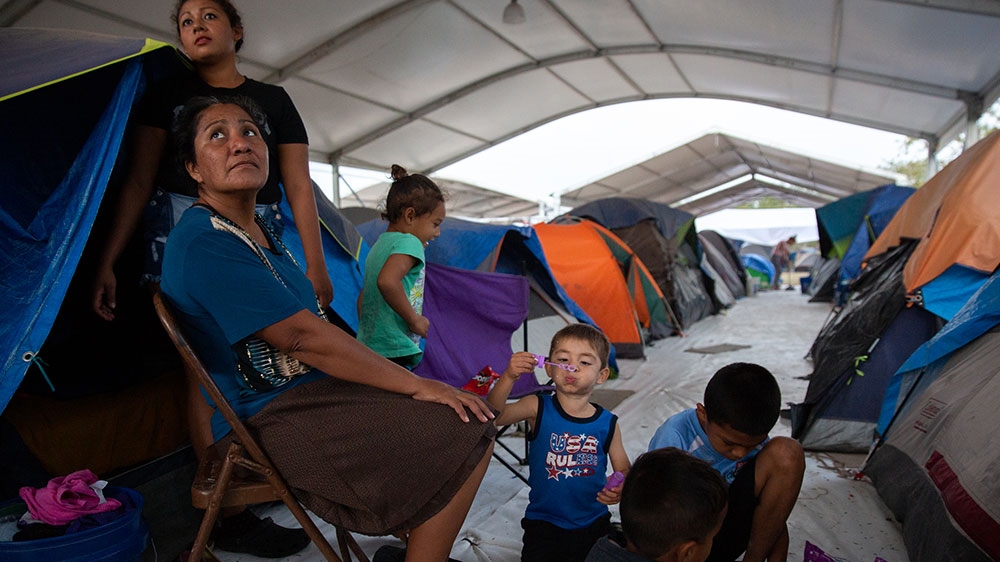US-Mexico border: The ‘sidewalk school’ teaching migrant children
In a camp housing asylum seekers in Matamoros, Mexico, one woman’s school helps migrant students get an education.
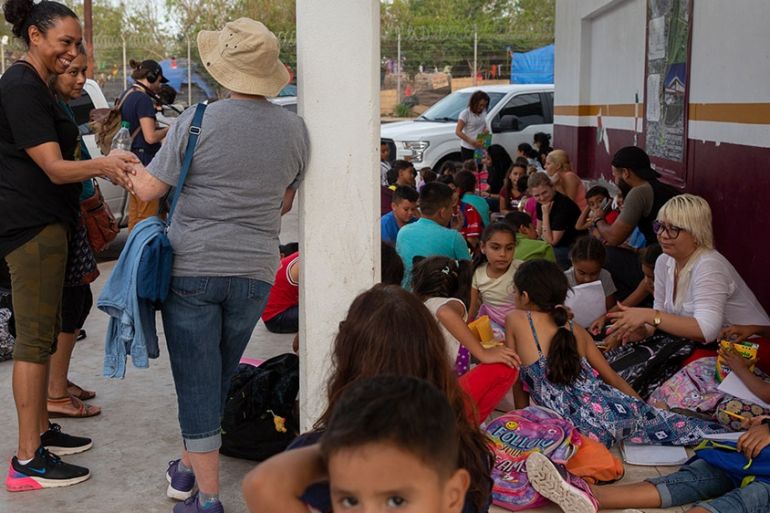
Matamoros, Mexico – Rosario Mederos taught letters and numbers to a handful of children who lived in the surrounding tents. She raised her voice politely to speak above the racket of a bustling refugee camp on the US border.
Mederos is not a teacher by trade. Like everyone else here, she arrived with hopes of moving to the US. But that was more than eight months ago. Now she helps give modest classes to small children with the hopes of keeping up their most basic schooling while they wait for US authorities to answer their families’ asylum claims.
Keep reading
list of 4 itemsAdvocates gird for Texas migrant law that could upheave US immigration
US appeals court blocks Texas from arresting and deporting migrants
‘Incendiary and wrong’: Biden spurs anger for calling migrant ‘an illegal’
Mederos took the hand of a young boy, kneeling and bent forward on a sidewalk outside a government office and she guided his pencil to trace the letter A.
“Many kids here, they can barely read and write,” she told Al Jazeera with a sigh earlier this year.
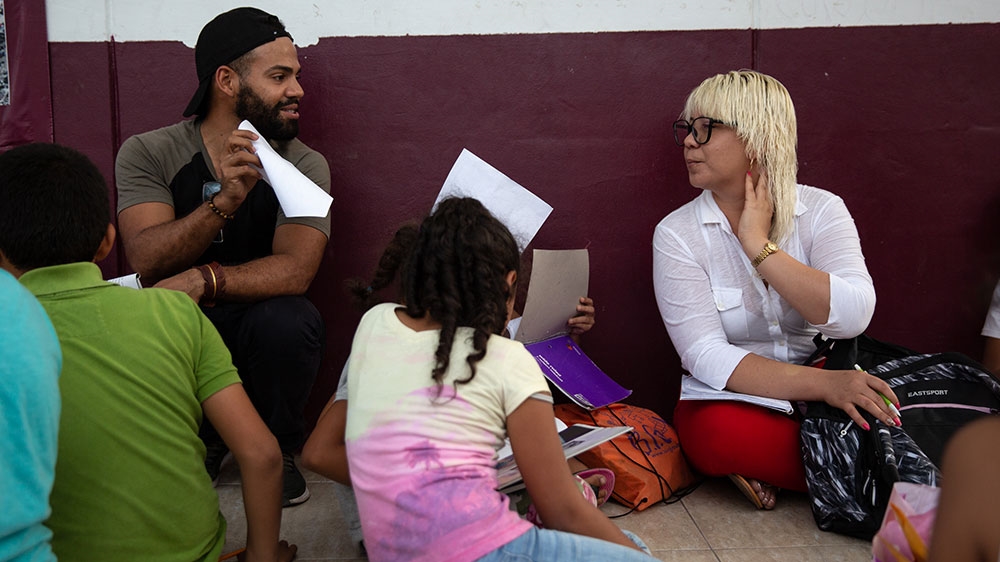
Five other teachers like her sat on the pavement, surrounded by nearly 100 kids who wrote with pencils on worksheets, read from workbooks and nibbled sandwiches brought by the local woman and activist who made this all happen: Felicia Rangel-Samponaro.
“This is the only schooling these kids get,” she said, handing out snacks to the boisterous group of students clustered a few paces away from the international bridge that connects Mexico with Texas.
Once a housewife in Brownsville, Rangel-Samponaro had long volunteered to help the many migrants who passed through her city. But after new US migration rules last year known as “Remain in Mexico” began blocking asylum seekers from entering her country, Rangel-Samponaro, saddened by what she saw, got fully involved. She founded a school. She moved to Mexico.
‘We’re here for a dream’
Her school holds seminars to explain confusing migration rules to adults stuck in the camp. She helps guide her teachers through the procedures of their asylum cases. And she has given supplies to about 500 children.
She has put all her money into this effort but the kids in this camp do not seem likely to move on anytime soon.
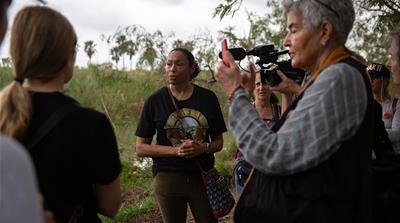
“The school has to keep going,” she told Al Jazeera, her palm on her cheek as she looked over the kids crowded on a sidewalk just before sunset. “So many people who have no other option depend on it.”
The students were children like nine-year-old Richard, who copied letters on a worksheet while his mother, 46-year-old Ingrid Funes from Honduras stood by and watched.
Richard had lived for more than four months in the camp when Al Jazeera met him in January. He stayed in a plastic tent and was out of school with no near prospect of moving on. The nine-year-old and his mother cooked basic staples over a wood fire and washed their clothes in the river that divides them from the country they hope to reach.
Funes said Richard plays all day with sticks, stones and donated toys and other kids, but he asks her sometimes what they are doing and why they are not going back home.
“I tell him we have to keep fighting,” she said, watching him as he studied. “That we’re here for a dream, for a future for him. But he doesn’t understand.”
Funes left home with hopes of escaping poverty in her dirt-floor house where she and her husband farmed small plots of corn and beans and had sporadic work but sometimes went hungry. She struggled to support her daughter, 25 and mentally disabled, who she left with her husband in Honduras but hopes to take to the US to live someday.
If her asylum claim is denied, she said, she would send Richard over the border bridge by himself to be claimed by relatives in San Antonio, Texas, and she would find a way to hire a smuggler to cross the Rio Grande nearby.
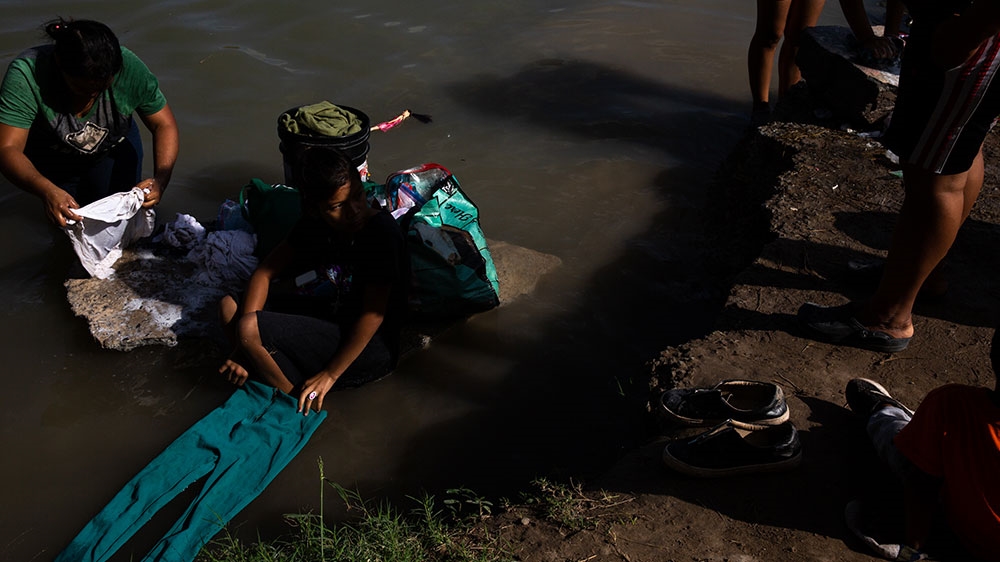
Another boy at the school that day, 14-year-old Marco Patt, had noticed the grouping of kids with books and stopped by to see if he might borrow a book in English to pass his idle days in Matamoros.
Slightly more fortunate than the families in tents, Patt and his mother shared a room in a nearby apartment while they wait in Matamoros.
“I don’t have anything to do,” he said in English. “So I don’t really do anything.”
The teachers
Rangel-Samponaro, the school’s founder said more than 500 kids were in a similar situation in migration limbo here. For them, she had started the school.
For years before she had volunteered through a church group attending to the stream of migrants and asylum seekers who flowed through their border community. Then early last northern summer, she said, the flow practically stopped as the US Department of Homeland Security implemented its new Migrant Protection Protocols, also known as Remain in Mexico, stopping admission of asylum seekers while their cases were processed for months.
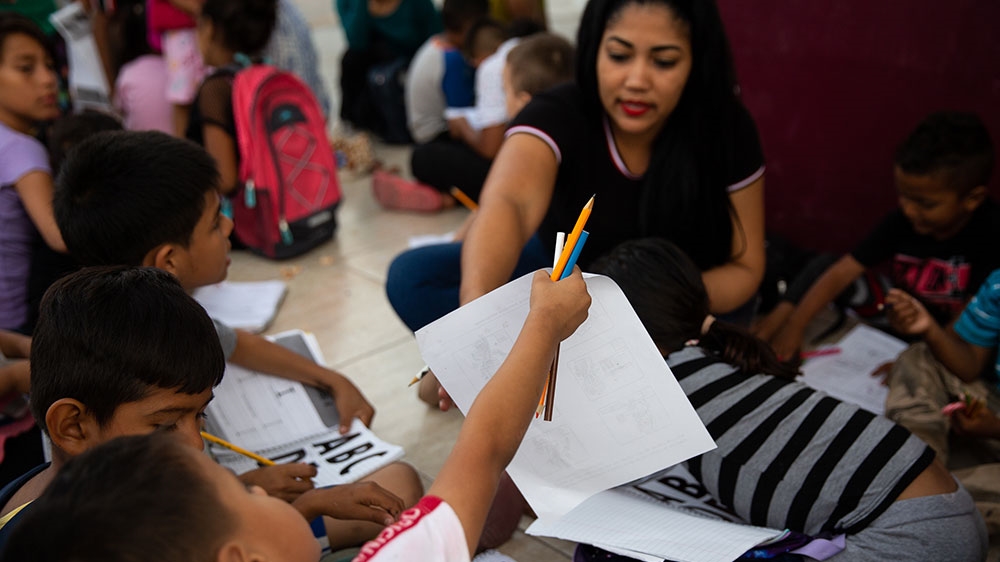
Rangel-Samponaro began crossing the border regularly to bring donations but the dynamic had changed. Instead of the flow of people, she saw the same faces week after week. The children in the growing camp started to hug her each time she arrived. Soon she was crossing the border every day and she started the school last August.
At first, she hired two Cubans stuck in Matamoros to teach classes. She moved from Brownsville into a four-storey Matamoros apartment building with her two teachers and a small community of other Cubans awaiting their asylum proceedings.
Soon Rangel-Samponaro hired six teachers from the building to give three classes per week. Through a GoFundMe campaign, she has raised more than $17,000 since last August. That money has helped allow her to attend to the migrants in Matamoros full-time.
She also helps connect her teachers with the volunteer resources from the US – not only donations but legal guidance as well.
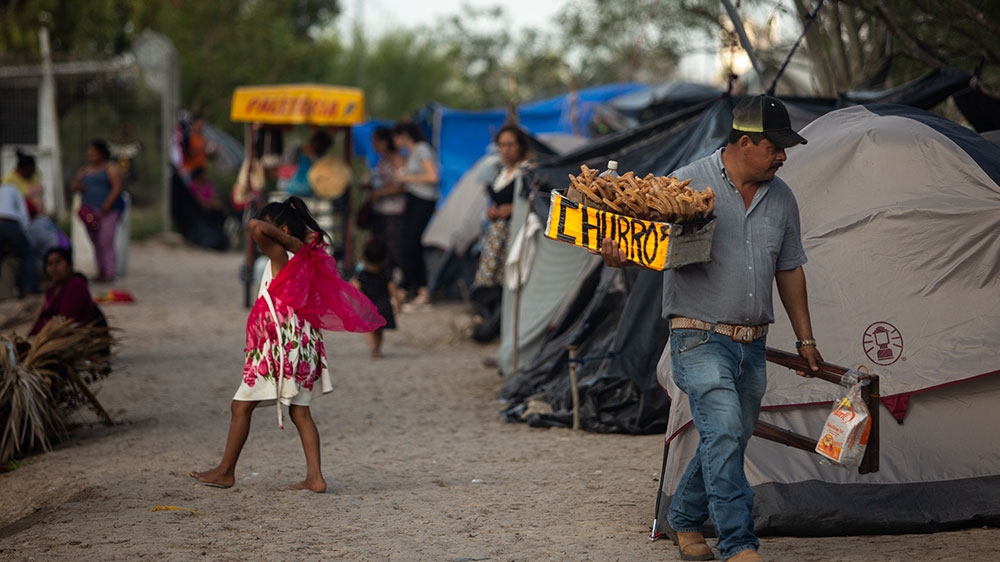
The school looks a bit different now as fears of the novel coronavirus grip the camp. The school has started virtual classes, providing tablets to some students to continue their studies, Rangel-Samponaro recently wrote on Facebook. The school has also been able to continue handing out lunch and other supplies.
Local media reported last week that asylum seekers were set to be moved to a field more than 6.5 kilometres (four miles) from the encampment that had been growing at the border for months. Local activists report that the movement has so far not happened.
US immigration hearings have also been postponed, forcing many to wait even longer to learn the outcome of their asylum cases and making makeshift schools like Rangel-Samponaro‘s all the more important.
